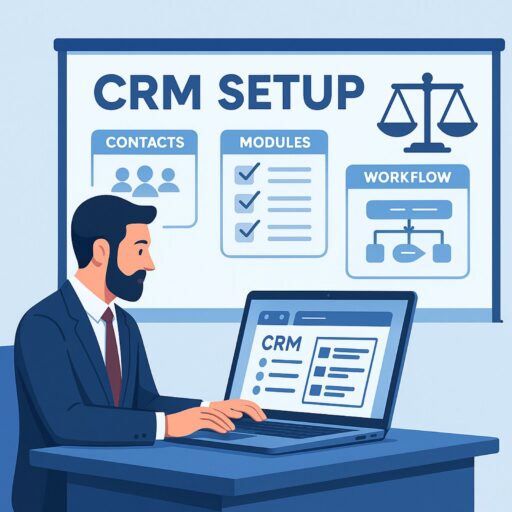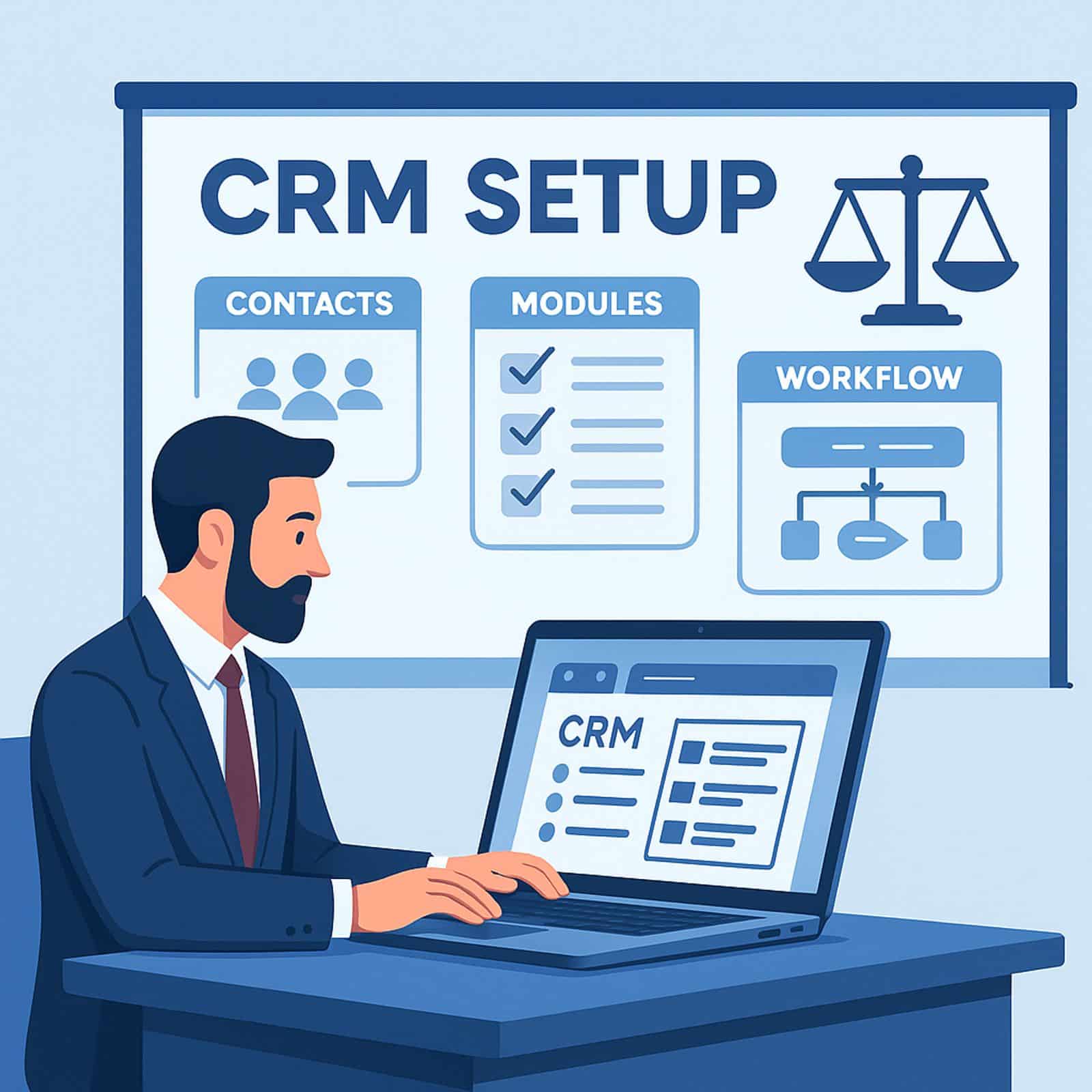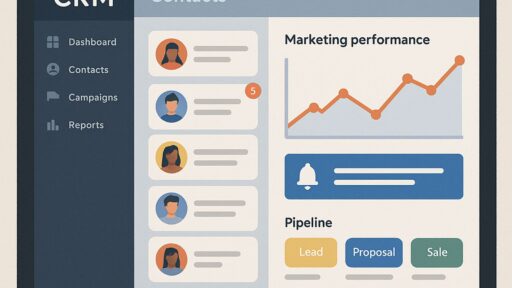Discover The Best CRM Setup for Lawyers: Modules, Contacts and Workflow
Introduction
For lawyers, an effective CRM must reflect the complexity of their profession. It’s not just about contact management. It also includes tracking legal cases, respecting deadlines, and ensuring fluid client communication. A well-thought-out CRM setup helps structure these processes and boosts productivity.
Types of Contacts to Create
Law firms work with more than just clients. You must distinguish several key categories:
- Clients: individuals or companies receiving legal services.
- Prospects: contacts who have shown interest but not yet committed.
- Partners: notaries, bailiffs, accountants who collaborate regularly.
- Colleagues: external lawyers involved in shared cases.
- Opposing parties: adversaries in ongoing legal procedures.
This segmentation allows for tailored communication and tracking.
Useful Modules to Activate
A CRM setup for lawyers should include specific modules:
- Case management: centralizes documents, notes, and communication for each case.
- Shared calendar: schedules court dates, meetings, and legal deadlines.
- Billing: generates quotes, tracks payments, automates reminders.
- Task tracking: assigns and monitors internal responsibilities.
- Reporting: analyzes commercial and operational performance.
These features streamline coordination and ensure structured case handling.
Key Custom Fields
To adapt the system precisely, consider adding these fields:
- Procedure type: civil, criminal, administrative, etc.
- Jurisdiction: court or authority handling the case.
- Limitation date: legal deadline not to be missed.
- Amount at stake: financial value involved.
- Case status: ongoing, closed, pending, etc.
These fields allow better sorting and task prioritization.
Example of a Conversion Cycle
A standard conversion cycle in a law firm might look like:
- First contact: inquiry via website or phone.
- Qualification: assess relevance and feasibility.
- Initial consultation: meet to discuss the case.
- Proposal: send fee agreement or quote.
- Acceptance: contract signed and case opened.
- Follow-up: manage the case until closure.
- Retention: share legal updates post-case.
This structured process ensures professionalism and consistency.
Real-Life Use Case
A business law firm implemented this CRM setup. Result: a 40% reduction in admin workload and significantly improved client satisfaction. Lawyers can focus on core legal tasks while maintaining thorough follow-up.
Conclusion
A properly configured CRM is a valuable asset for lawyers. It structures workflows, enhances internal and external communication, and ensures precise tracking. By tailoring modules, contact types, and workflow cycles to legal needs, firms gain in efficiency and professionalism.












